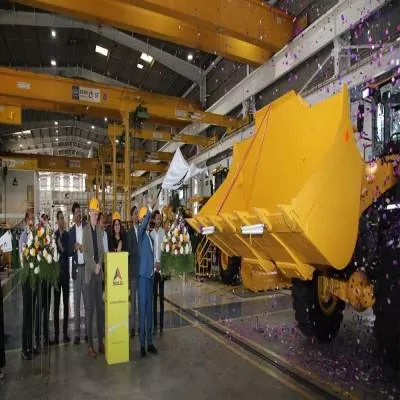India absorbs 0.73 million sq ft co-working space in 2016; with Mumbai at highest
Out of the total absorption, Mumbai threw up a surprise with the highest absorption nationally, followed by Delhi-NCR, Kolkata, Bengaluru, Chennai, Pune and Hyderabad. In terms of seats available, Delhi-NCR and Mumbai lead the way and are followed by Bengaluru, Kolkata, etc.

Hyderabad, which has a first-of-its-kind incubator space called the T-Hub, also has 750 seats. There is currently very limited supply of co-working spaces but once that situation improves, the demand scenario is also expected to transform. Companies can save as much as 15-20 per cent by working in a co-working space, which provides an ultra-modern workplace along with plug-and-play amenities that bring most of these facilities at par with grade-A offices.
The clientele include small and medium-sized enterprises, start-ups, freelance professionals, consultants, corporates, etc. Firms wanting to get more agile are open to housing their innovation teams in such facilities. Some client-centric companies look at making some of their key teams sit close to client sites. Bigger companies and corporates are slowly realising that collaborative work spaces with open areas can boost employee productivity and help attract as well as retain talent.
Given the inherent risks in running a co-working space, certain operators are looking at ways to mitigate the risk by preferring to lease out their entire area in a good location, or a big chunk of it, to companies or corporates. Such ‘anchor tenants’ can help them get a fixed income stream even as start-ups and freelancers bring in somewhat unsteady revenues. This mutual reliance will help both the operators running co-working facilities and the bigger firms or corporates.
Through still very nascent, this category could prove to be a disruptor as bigger co-working players such as WeWork enter India and more such facilities prop up across cities. In the long-term, however, consolidation among co-working operators will occur, as not all of them will be able to mitigate the risk in their business models or have deep pockets to survive for long in non-prime locations with cheaper rents. Only a handful of big players are expected to eventually remain.
About the Author:
Ramesh Nair is CEO & Country Head, JLL India.
Co-working, a Western concept that involves various individuals or start-ups sharing a common workplace environment, is slowly catching on across the metros. At a pan-India level, co-working space of 0.73 million sq ft got absorbed last year. In terms of the number of seats available, around 9,600 are available at co-working facilities across the country. Out of the total absorption, Mumbai threw up a surprise with the highest absorption nationally, followed by Delhi-NCR, Kolkata, Bengaluru, Chennai, Pune and Hyderabad. In terms of seats available, Delhi-NCR and Mumbai lead the way and are followed by Bengaluru, Kolkata, etc. Hyderabad, which has a first-of-its-kind incubator space called the T-Hub, also has 750 seats. There is currently very limited supply of co-working spaces but once that situation improves, the demand scenario is also expected to transform. Companies can save as much as 15-20 per cent by working in a co-working space, which provides an ultra-modern workplace along with plug-and-play amenities that bring most of these facilities at par with grade-A offices. The clientele include small and medium-sized enterprises, start-ups, freelance professionals, consultants, corporates, etc. Firms wanting to get more agile are open to housing their innovation teams in such facilities. Some client-centric companies look at making some of their key teams sit close to client sites. Bigger companies and corporates are slowly realising that collaborative work spaces with open areas can boost employee productivity and help attract as well as retain talent. Given the inherent risks in running a co-working space, certain operators are looking at ways to mitigate the risk by preferring to lease out their entire area in a good location, or a big chunk of it, to companies or corporates. Such ‘anchor tenants’ can help them get a fixed income stream even as start-ups and freelancers bring in somewhat unsteady revenues. This mutual reliance will help both the operators running co-working facilities and the bigger firms or corporates. Through still very nascent, this category could prove to be a disruptor as bigger co-working players such as WeWork enter India and more such facilities prop up across cities. In the long-term, however, consolidation among co-working operators will occur, as not all of them will be able to mitigate the risk in their business models or have deep pockets to survive for long in non-prime locations with cheaper rents. Only a handful of big players are expected to eventually remain. About the Author: Ramesh Nair is CEO & Country Head, JLL India.






















